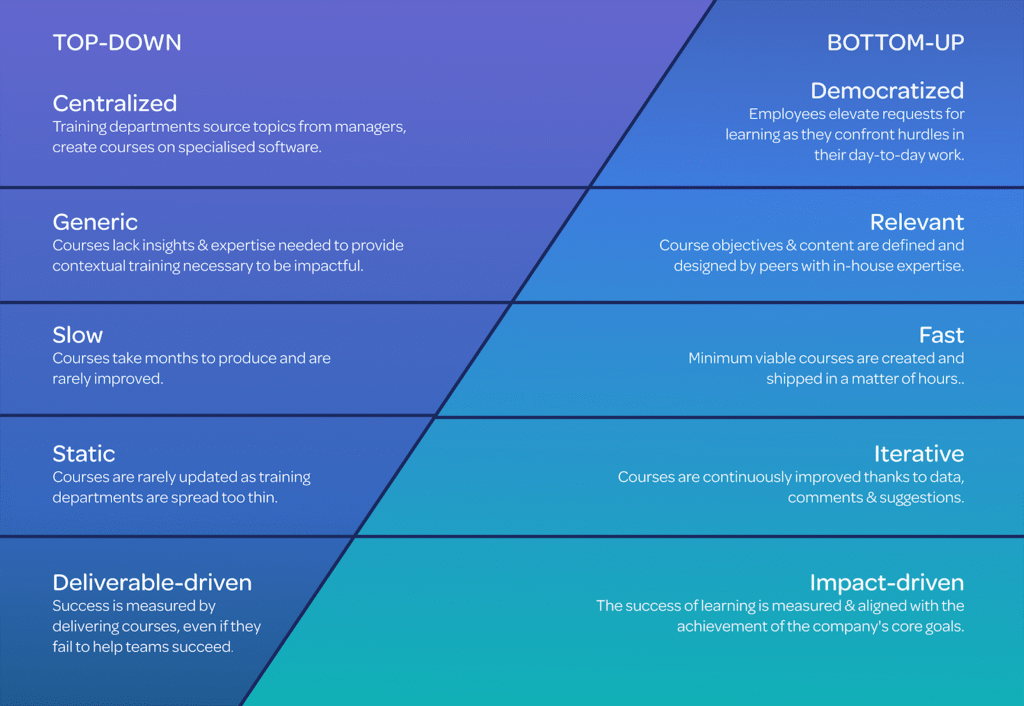Leadership training is often heralded as a cornerstone of organisational success, yet many leaders encounter obstacles due to entrenched misconceptions about its implementation. These myths can act as unseen barriers, stifling organisational progress and affecting individual teams.
Imagine a team striving to reach its potential, only to be held back by outdated beliefs and practices about leadership roles and responsibilities. This can lead to underperformance and missed growth opportunities, akin to trying to drive a car with the parking brake engaged.
Leaders must recognise and dismantle these myths to unlock their team’s full leadership potential, strengthen and propel them toward success. Consider the real-world impact: a team that believes leadership training is a one-time event may never fully embrace the ongoing learning necessary to adapt to new challenges. Or think about a company that restricts training and mentoring to top-tier leaders, missing out on the fresh insights and energy emerging leaders could bring.
Addressing these myths can help leaders create a more supportive, dynamic, and responsive environment. Let’s delve into five prevalent myths about future leadership training that you might still believe and explore why debunking them is essential for your teams to thrive.
Through real-life scenarios and practical solutions, we aim to provide a clearer understanding of how to develop leadership skills effectively and enhance one’s ability to create others for organisational success.
Myth #1: Leadership Training is a One-Time Event

The belief that leadership training is a singular event rather than an ongoing process is a common misconception. Effective leadership development requires continuous learning and real-world application.
A comprehensive meta-analysis by Lacerenza et al. (2017) found that participants in leadership training programs experienced a 25% increase in learning and a 20% improvement in overall job performance. This underscores the importance of ongoing development to maintain and enhance leadership competencies.
Leadership Training Performance

Solution: Foster a growth mindset within your organisation by encouraging leaders to view challenges as opportunities for development. Implement regular competency assessments and feedback sessions to promote continuous learning. Additionally, establish mentorship programs and cross-functional projects to provide leaders from diverse groups with hands-on experience and expertise, ensuring they remain adaptable and effective in a dynamic environment.
Myth #2: Top-Down Training is Most Effective

It’s a common misconception that leadership training is only necessary for top leaders and those in top positions. In truth, limiting development opportunities to senior management can prevent organisations from unlocking the full potential of their workforce. When leadership development is made accessible to employees at all levels, it leads to stronger collaboration, better decision-making, and improved performance.
According to Harvard Business Review, “teams with inclusive leaders are 17% more likely to report that they are high-performing, 20% more likely to say they make high-quality decisions, and 29% more likely to report behaving collaboratively.”
Solution: Build leadership development pathways for emerging talent across all levels of your organisation. Use 360-degree feedback tools to assess and grow leadership potential company-wide. Introduce reverse mentoring programs to encourage knowledge sharing between generations, where junior staff help senior leaders stay current with new technologies and perspectives. These strategies foster a more agile, inclusive, and future-ready leadership culture.
Myth #3: In-Person Training is Superior

While traditional in-person leadership training has been considered the gold standard, recent insights suggest that virtual and hybrid models can be equally, if not more, effective in specific contexts. A Forbes article highlights that virtual training can match or surpass the effectiveness of in-person sessions when properly implemented, offering benefits such as enhanced engagement and flexibility.
Research from the NeuroLeadership Institute, discussed in the Harvard Business Review, indicates that virtual learning can enhance key learning factors like attention and memory retention, sometimes outperforming traditional classroom settings.
These findings suggest that digital and hybrid leadership development programs can provide comparable, and sometimes superior, outcomes to traditional in-person training, offering organisations effective and adaptable alternatives.
Solution: Combine the best of both formats through hybrid learning models. Use interactive platforms to keep virtual participants actively engaged, and incorporate microlearning modules—short, focused lessons leaders can complete at their own pace. This structure maximises flexibility and ensures consistent impact across a wider audience, without sacrificing engagement or quality.
Myth #4: Leadership Development is Expensive

The perception that leadership training requires substantial financial investment often deters organisations from pursuing such initiatives. However, effective leadership development doesn’t have to be costly and can yield significant returns. For example, Motorola’s commitment to employee education through initiatives like Motorola University has demonstrated the company’s dedication to continuous learning and career development. Harvard Business Review
Solution: Implementing cost-effective strategies can make leadership development accessible without compromising quality. Consider the following approaches:
Mentorship Programs: Pairing emerging leaders with experienced mentors facilitates knowledge transfer and personalised development. This internal resource utilisation minimises costs while fostering a culture of continuous learning.
Cross-Functional Projects: Engaging employees in projects across different departments enhances their leadership skills by exposing them to diverse challenges and perspectives. This hands-on experience promotes adaptability and collaboration without additional training expenses.
Hybrid Learning Models: Combining online modules with in-person sessions offers flexibility and reduces costs associated with traditional training methods. Leveraging digital platforms allows leaders to learn at their own pace while minimizing travel and accommodation expenses.
Regularly assessing these initiatives’ return on investment (ROI) ensures they meet and achieve organisational goals. Coaching-based support models tailored to individual needs enhance decision-making and adaptability skills, contributing to overall organisational success.
Myth #5: Leaders at Different Levels Need Different Training

It’s a common misconception that leadership development should vary significantly across organisational tiers. In reality, foundational leadership competencies—such as emotional intelligence, strategic thinking, and effective communication—are universally essential.
Despite recognising the importance and benefit of developing leaders at all levels, many organizations fail to implement comprehensive top-down development programs. For instance, 83% of companies acknowledge the need for leadership development across all levels, yet only 5% have fully implemented such initiatives. Forbes
Solution: Establish universal leadership development programs emphasising core competencies applicable to all leaders, regardless of their position within the organization. Tailor these programs through individualized development plans that address each leader’s unique strengths, areas for improvement, and career aspirations.
Promote cross-functional collaboration and mentorship to cultivate a continuous learning and growth culture for great leaders. This holistic approach to career development ensures that leaders at every level have the necessary skills to drive organisational success.
Conclusion
Debunking these myths about future leadership training is not just a theoretical exercise; it’s a practical necessity for any organisation aiming to thrive in today’s fast-paced business landscape. Imagine your organisation as a ship navigating through the turbulent waters of change.
Without effective future leadership programs, leaders programs, leadership programs, and development programs, the ship is likely to drift off course, missing valuable opportunities for growth and innovation.
Inclusive training is like gathering a diverse crew with varied industry perspectives, each contributing unique industry insights that can steer your marketing organisation toward success.
Flexible program delivery models, such as hybrid training, offer the adaptability needed for great leaders in our increasingly digital world. They provide the tools and access for leaders to learn and grow without being tethered to traditional methods, much like a ship equipped with modern navigation technology.
Cost-effective strategies ensure that leadership development doesn’t drain your resources but rather enhances them, much like investing in a sturdy hull that withstands the harshest seas. By focusing on universal core skills, you’re building a foundation that supports future industry leaders at every level, akin to the benefit of a well-coordinated crew working in harmony.
Call to Action: It’s time to look closely at your leadership training strategies. Adopt a more inclusive and continuous approach to development, and watch as your organisation reaps the rewards in employee engagement, retention, and overall performance. Investing in leadership development means you’re charting a course for future leaders in your business strategy and success, ensuring that your ship—and everyone aboard—sails smoothly into a prosperous future.

A trailblazer in humanising leadership and building high-resilience teams. As a former United Nations Peacekeeper, he leverages his high-stakes experience to redefine leadership dynamics. With a career distinguished by numerous accolades, Joseph now helps organizations thrive through a human-centric approach, enhancing performance, productivity, and workplace culture.







